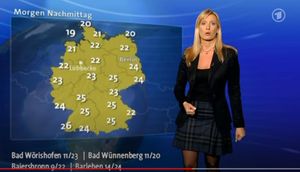Season 3 of the hit Prime Video series 'Reacher' brings viewers back to the gripping world of Jack Reacher, played by Alan Ritchson, as it adapts Lee Child's 2003 novel 'Persuader.' Lauded for its heart-pounding action and complex characters, this season's storyline follows Reacher delving deep undercover within a smuggling operation to locate a missing operative and confront an old foe.
The third season is largely celebrated for its faithfulness to the original novel. Following the formula of previous seasons, it dives right from the book's pages offering fans familiar elements, albeit with some modern twists. One of the standout aspects of the adaptation is its depiction of Zachary Beck's remote estate in Maine—characterized by its long driveway, guardhouse, and picturesque but foreboding shoreline)—which fans feel is almost too accurate to be real.
Despite its faithfulness, the series does introduce several alterations intended to streamline the narrative for television audiences. While the series largely follows the plot arc of 'Persuader,' it occasionally makes significant modifications to character roles and events to ramp up the excitement and to weave fresh narrative threads.
Notably, the first episode kicks off with an adrenaline-fueled kidnapping scene which grabs viewers' attention immediately. This begins with Reacher posing as part of the operation to infiltrate Beck’s network, establishing his trustworthiness through some gritty action, including playing Russian roulette. While the essence of this scene mirrors the book closely, the adaptation introduces dynamic visual storytelling—switching the dialogue stage from car to external setting, making the scene feel more alive with movement.
The characterizations show changes too, reflecting different focuses on relationships. One significant alteration is the portrayal of Paulie, originally named Paul Masserella, changed to Paulie van Hoeven to suit the actor’s background. This change serves not just to personalize the character but also to provide visual originality. Beck’s wife from the book, who plays pivotal roles, is entirely absent, consolidably streamlined through Richard's character, showcasing the adaptation's choice to focus more on direct relationships rather than tangential characters.
Direction decisions also yield changes. Where the novel describes the ‘shoe phone’ Reacher employs as an operational gadget for email communication, the series finds flexibility by introducing it as a more viewer-friendly cell phone concept. Though this compromises operational security—a key theme of espionage—it enhances the active pacing required of television.
Episode two introduces supplemental characters like Richard's bodyguard, putting tension on scenes not found in the book, whereas character Frances Neagley’s role expands significantly across the season, creating continuity and added complexity. Neagley’s presence offers another layer of depth to the narrative, bridging past encounters with Reacher—fulfilling fan desires for interconnected storytelling.
Despite these shifts, it’s the show’s character moments and humor where the changes shine brightest. The book’s more serious tone is counterbalanced with Reacher's engaging quips, allowing Ritchson's comedic timing to flourish—something absent from the printed pages where Reacher often said less, blending his actions with minimal dialogue.
Each episode advances the plot, steadily feeding viewers fresh content alongside action-packed sequences. For example, Episode 3 showcases some inventive plot additions, like character Angel Doll, whose role is significantly more pronounced on screen versus the novel’s brief encounters, allowing tension and suspense where the book left space.
The attention to detail is commendable. From the conversation modulation and character adjustments to narrative pacing, the showrunners are making the necessary enhancements to adapt for modern-day television. Implementing actions where the book may have lagged ensures sustained viewer interest.
Overall, 'Reacher' Season 3 continues to attract loyal viewers with its complex narrative threads and dynamic adaptations of beloved characters. The synergy between Lee Child's gripping storytelling and the show's powerful visual storytelling results not only in thrilling action sequences but also well-rounded character development. Fans and newcomers alike can be thrilled by the combination of familiarity and fresh impressions built upon this acclaimed literary series.
With its release, the anticipation builds for future adaptations as viewers discuss the possibility of upcoming seasons based on other pieces from Child’s extensive saga, engaging new fan bases across different platforms. The conversations surrounding 'Reacher's' adaptations reflect its increasing significance as both television entertainment and literary preservation.



